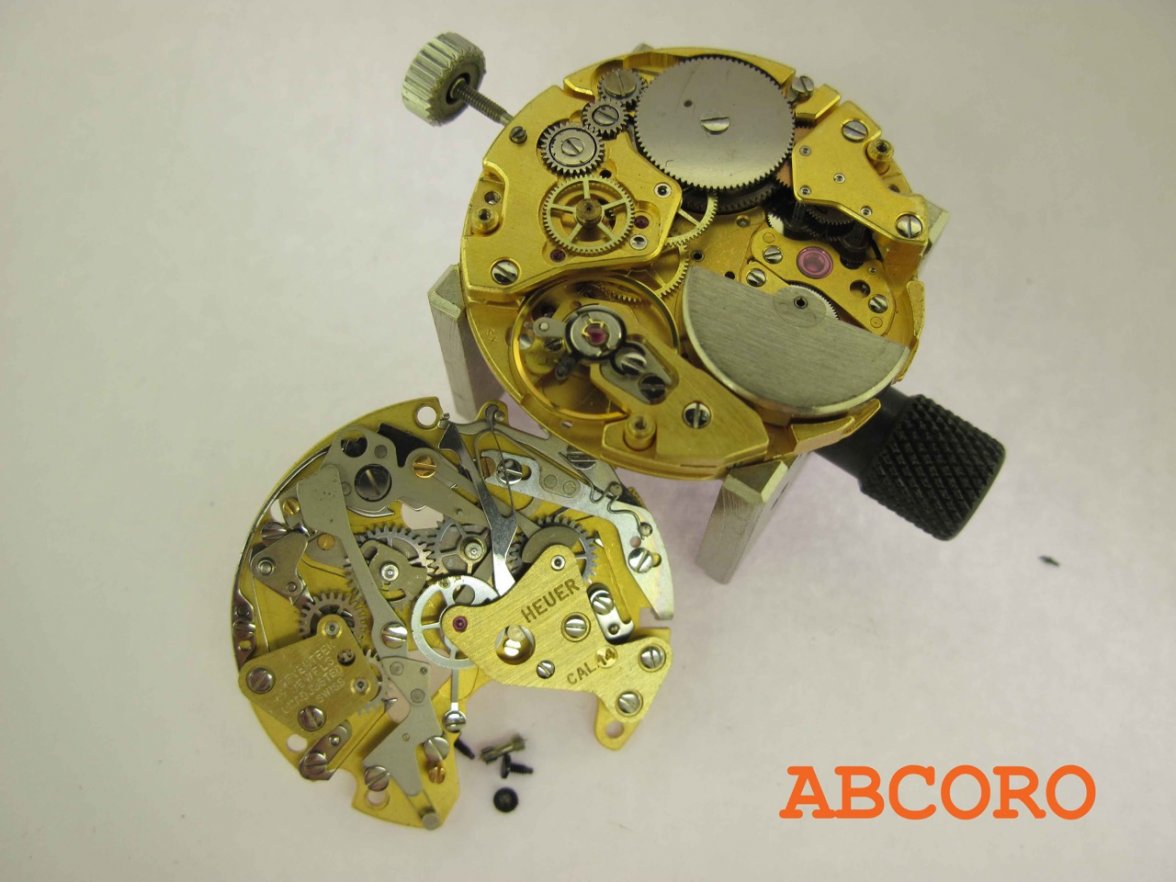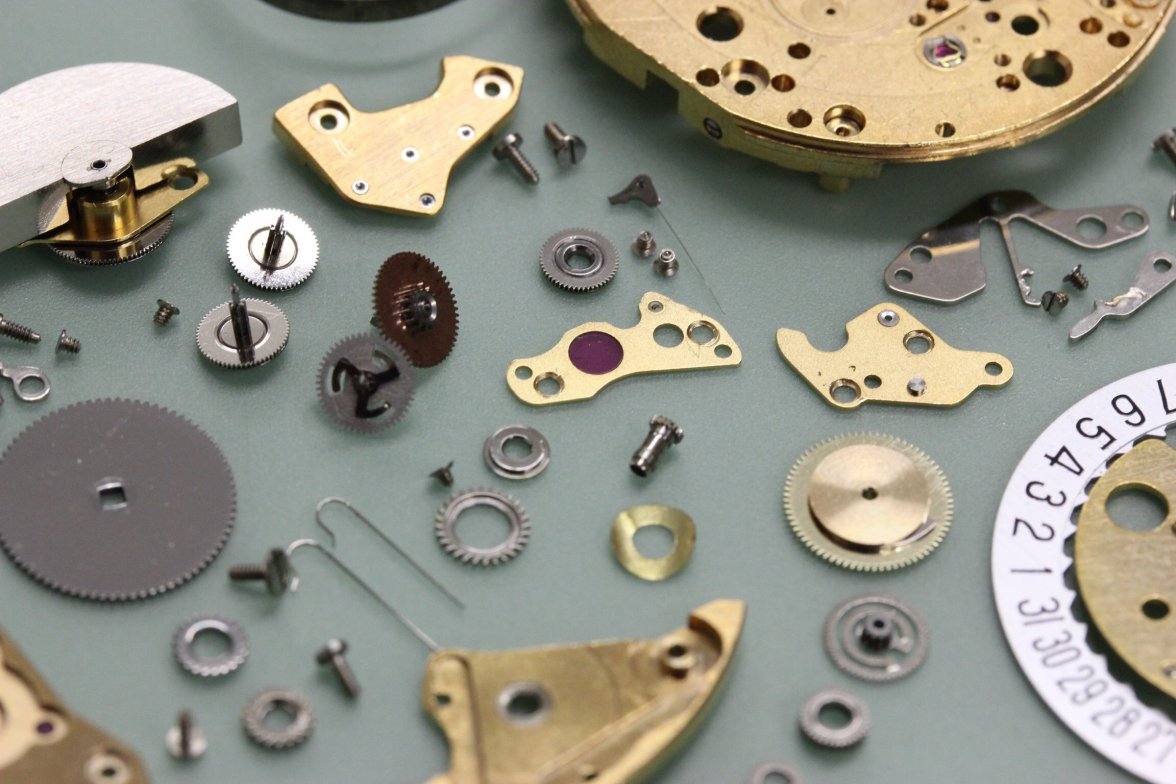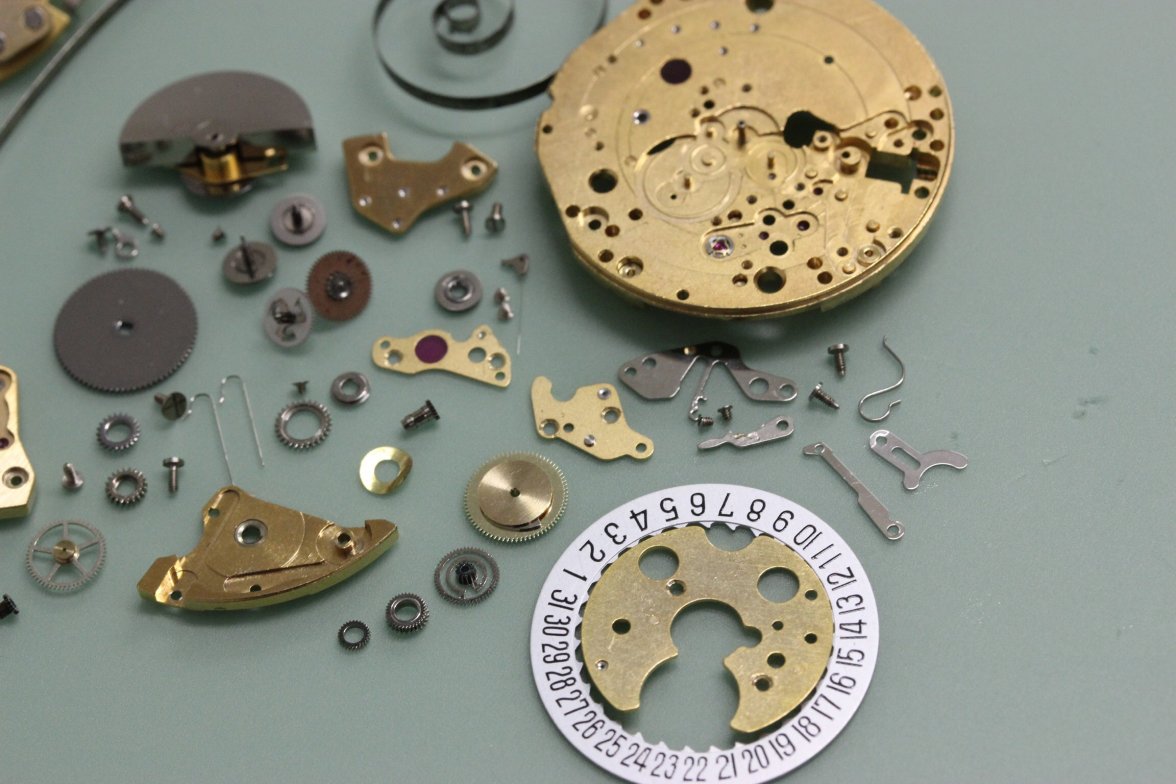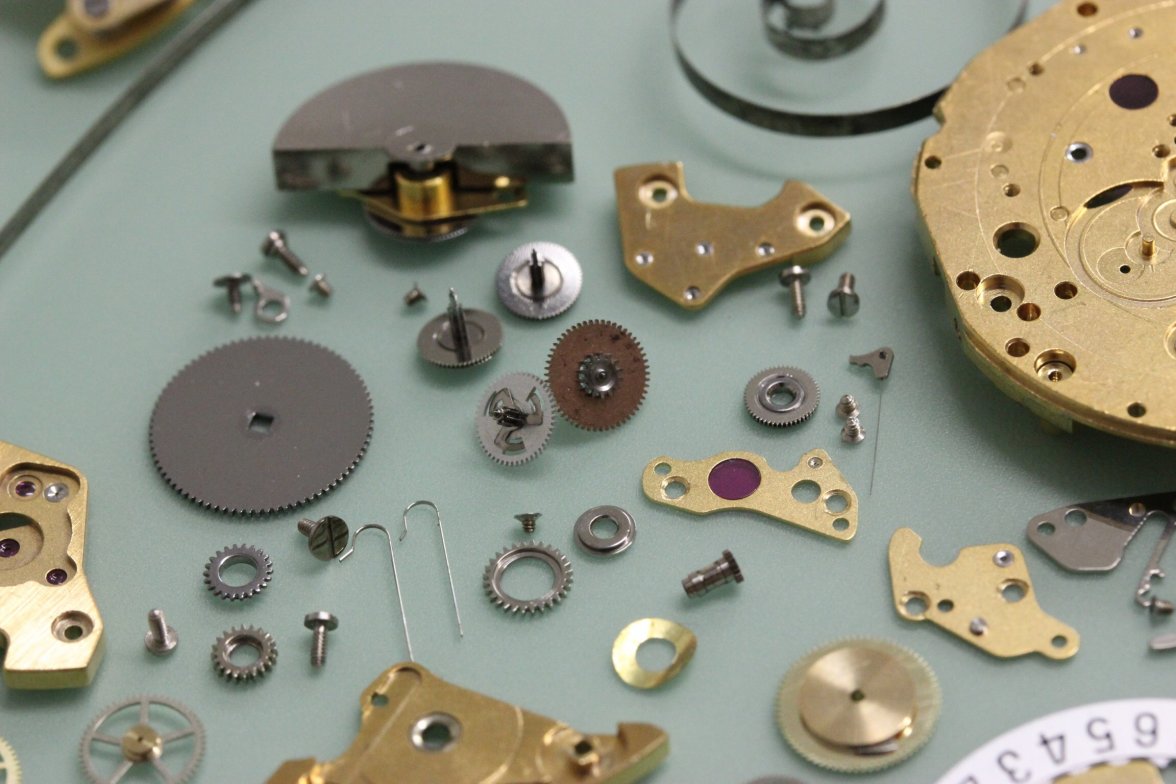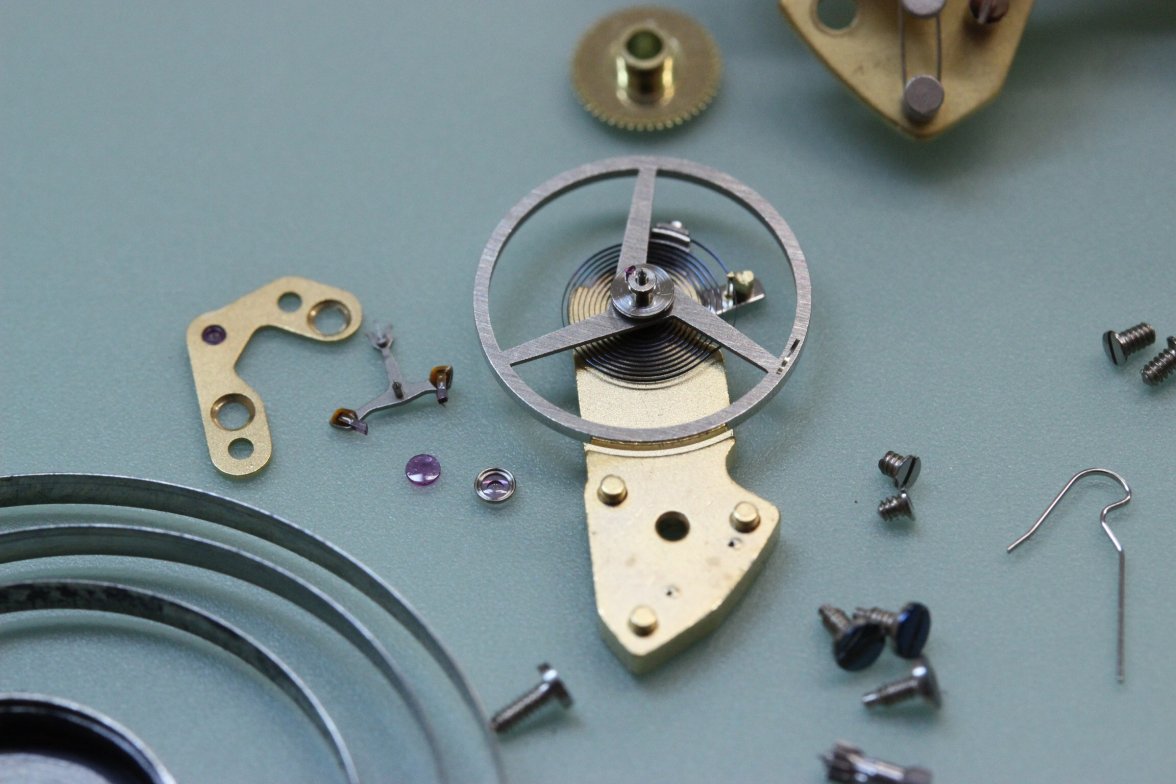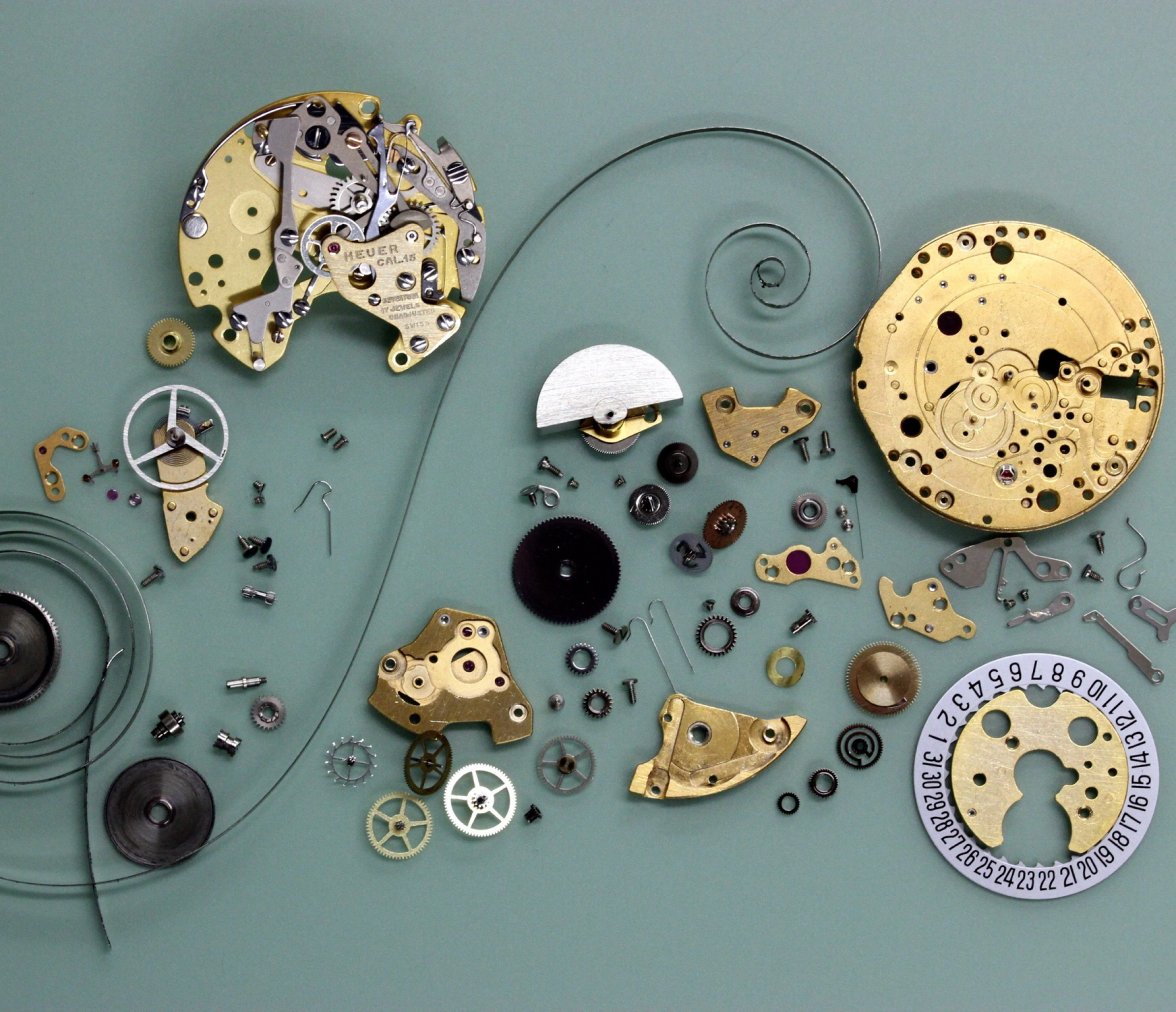Calibre11
·Many here will know the difference between an integrated chronograph (e.g. El Primero) and a piggy back movement, like the Chronomatic (Cal. 11/ 12/ 14/ 15) series.
Essentially, the latter takes a base movement used for a 3-hand watch and bolts a chronograph module on top. This great photo that Abel took of my watch shows the two parts really well- I'd never seen it before
In the case of the Chronomatic movement, the base movement was designed by Buren, which was bought by Hamilton in 1966. You can see the micro-rotor above- very different to the large rotor used on the Calibre 1887 for example.
And the second component is the Chronograph module designed by Dubois-Depraz, who also make the chronograph module for many of TAG Heuer's movements today, including the new Calibre 12 used in the Monaco- an entirely different movement, but with the same name.
Essentially, the latter takes a base movement used for a 3-hand watch and bolts a chronograph module on top. This great photo that Abel took of my watch shows the two parts really well- I'd never seen it before
In the case of the Chronomatic movement, the base movement was designed by Buren, which was bought by Hamilton in 1966. You can see the micro-rotor above- very different to the large rotor used on the Calibre 1887 for example.
And the second component is the Chronograph module designed by Dubois-Depraz, who also make the chronograph module for many of TAG Heuer's movements today, including the new Calibre 12 used in the Monaco- an entirely different movement, but with the same name.
